As part of our journey to test and review the best light therapy lamps (available in our database), we’ve just finished testing the SAD lights made by Alaska Northern Lights!
In this article, we’ll go over the data we collected with our lab-grade spectrometer, my thoughts on each of the three lamps they offer, and which one you might want to grab for yourself.
So let’s dive right in!
The Lights
Alaska Northern Lights offers only 3 SAD therapy lights: the Aurora LightPad Max or Mini, and the NorthStar.
What sets these lamps apart from other brands is their sheer power! All of these claim to output over 10,000 lux at 2 feet! And they do! We’ll go over the data a little later.
Aurora LightPad Mini vs Max
The Aurora LightPad models are the newest offerings from this company and utilize high-quality LED arrays.
They’re both designed to be used on a desk and can be angled appropriately.
To use these, you just long-press the front power button to turn them on, and then tap to change the brightness settings, of which there are three.
The Mini is quite a bit smaller than the Max and makes for an excellent travel SAD lamp; however, it is VERY bright for its small size, and this can make it a bit uncomfortable to use.
The Mini features 180 LEDs, while the Max boasts 600, and both models offer three brightness settings.
Aurora LightPad Mini
- LEDs: 180
- Power: 30w
- Lux @ 1 ft: 42,450
- Lux/in2: 1,750
- CCT: 6400K
Aurora LightPad Max
- LEDs: 600
- Power: 47w
- Lux @ 1 ft: 30,990
- Lux/in2: 397
- CCT: 6550K
Technically, the Mini puts out more lux at 1 foot than the Max, but it’s far too bright to use at that distance, hence the much higher lux per square in. rating, so the Max tends to feel a lot more visually comfortable up close.
The NorthStar
Unlike the Aurora LightPad models, the NorthStar utilizes two large fluorescent bulbs instead of LEDs:
Here’s the NorthStar on my desk to give you a better idea of its size.
Its main selling point is the enormous emission surface area, which allows it to output a very high lux without being very uncomfortable in the field of view.
One of the obvious downsides, then, is also its enormous size! It also only has a single on-off button and one brightness setting.
Comparing the Data
Let’s go over the data from these three lights now!
Lux and Circadian Light
Using our lab-grade spectrometer, we took readings of each light over an hour.
Here are the lux levels at 1 foot:
As you can see, the Mini is indeed the brightest lamp! However, the Max isn’t far behind and has a distinct advantage due to its much larger size, which we’ll discuss next, as I believe it’s an essential distinction with these very bright lights…
But first, I want to look at CLa or circadian light, which is a bit more specific to light that activates our circadian system:
You see here that the NorthStar falls out of sync with the LightPad models. This is because it’s fluorescent spectrum doesn’t emit as much blue/green light as the LEDs.
Lux Per Square Inch
Since the Mini has a surface area of around 24 inches and the Max is around 78 inches, the LEDs are spaced out over a larger area, making it less bright at longer distances, but much more comfortable to be around at full brightness.
Let’s put this into perspective with another graph:
You see, while the Mini is technically putting out about 27% more lux than the Max and around 60% more than the NorthStar, it also feels almost 4.5x brighter than the Max and about 23x brighter than the NorthStar!
The performance is there but man this thing is uncomfortable to look at, in fact, you simply cannot look at it, it feels like looking at the Sun when it’s on full blast.
While you can stare right at the Northstar no problem!
And this is why even though the LightPad Max will cost you more upfront, it’s much more pleasant to use and will technically be more effective because you’ll be able to use it longer, and closer at a brighter setting.
Color Rendering Index
Regarding color quality, none of these lamps are anything to write home about.
The fluorescent-based Northstar performs the worst, no surprise there. But the Max and Mini are fairly subpar at around 80.
This isn’t the biggest selling point for a SAD light therapy lamp, I’ll give them that, but it is slightly disappointing since I am a light snob.
I just wanted to let you know.
Flicker
Lastly, but not least, we can discuss flicker. We have a lab-grade flicker meter to test lamps with. Here are the results from our testing:
As you can see, the two LED models, Mini and Max, exhibit a minimal amount of high-frequency flicker, which is not something I’m overly concerned about. However, the NorthStar has quite a bit of low-frequency flicker, exactly what some folks try to avoid.
If you find yourself sensitive to flicker like this, I suggest opting for one of the other models.
Or any of the other ones in our database!
Conclusion and Final Thoughts
If you’re looking for a highly powerful SAD lamp that can be effective from a distance, the LightPad Mini is my recommended choice. It’s far too bright to be used on its highest setting up close, so plan to use this at a distance of at least 2 feet. The mini is more like a Spotlight than anything else!
One advantage the Mini has over the other two is its compact size, so keep that in mind if you travel frequently.
However, my overall favorite was the LightPad Max. It’s more expensive than the Mini, but it’s so much more comfortable. And to me that makes it worth the extra money, because I’m far more likely to enjoy spending the time in front of it that’s needed.
And if you’re sensitive to bright light or glare, the best option by far is the NorthStar. It’s not quite as effective as the Max or Mini, but it more than makes up for this by spreading out its emission over a much larger surface area!
NorthStar



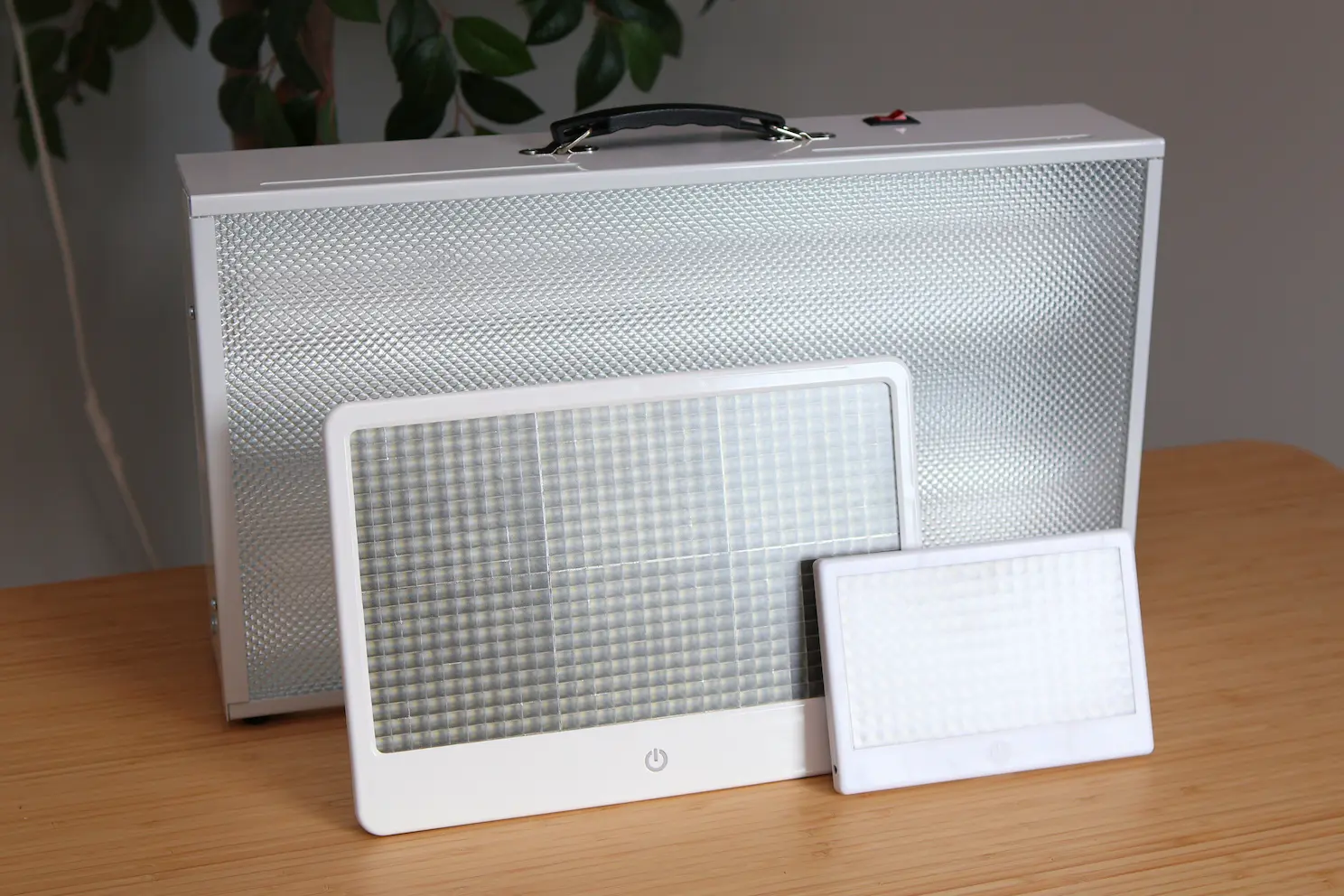

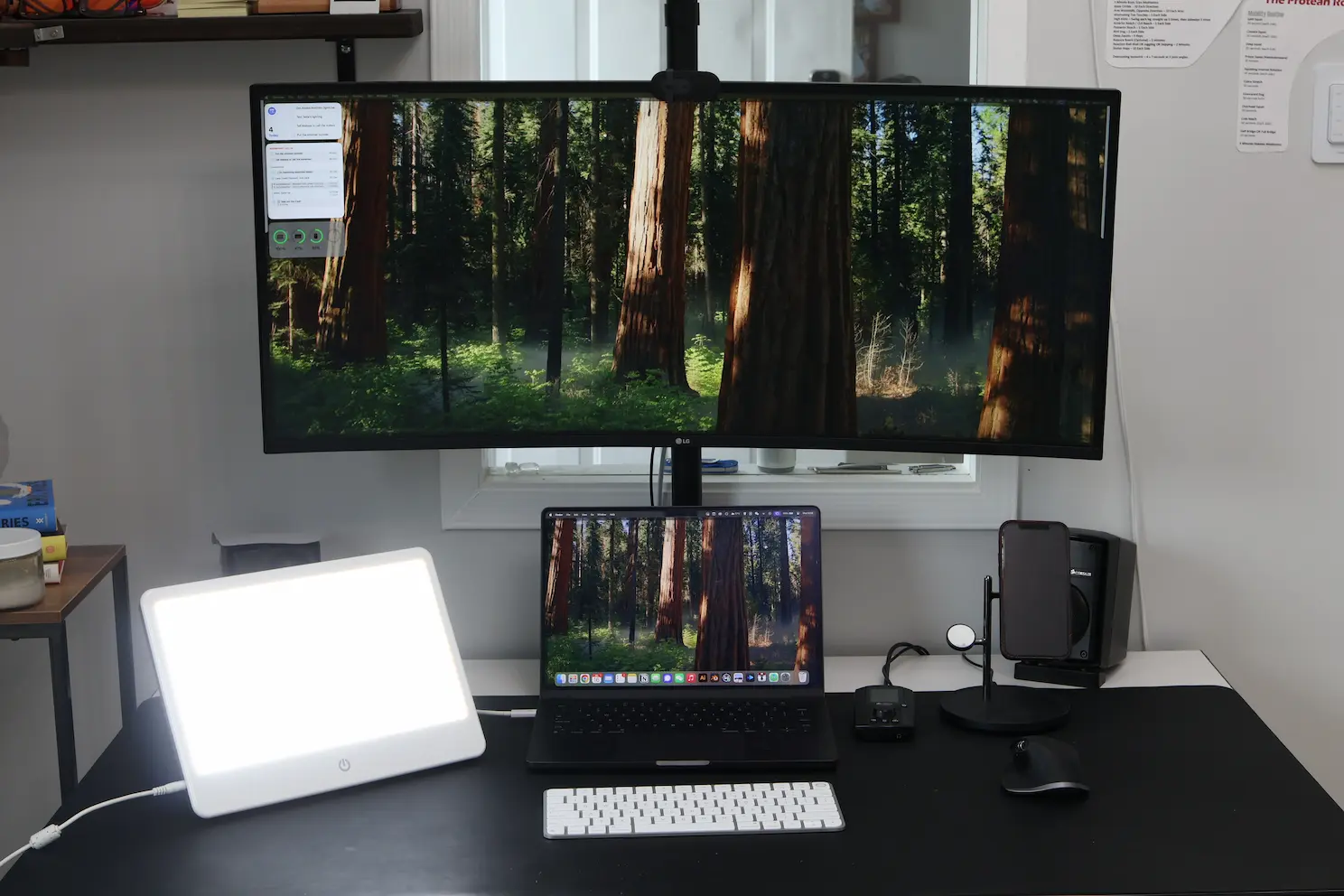
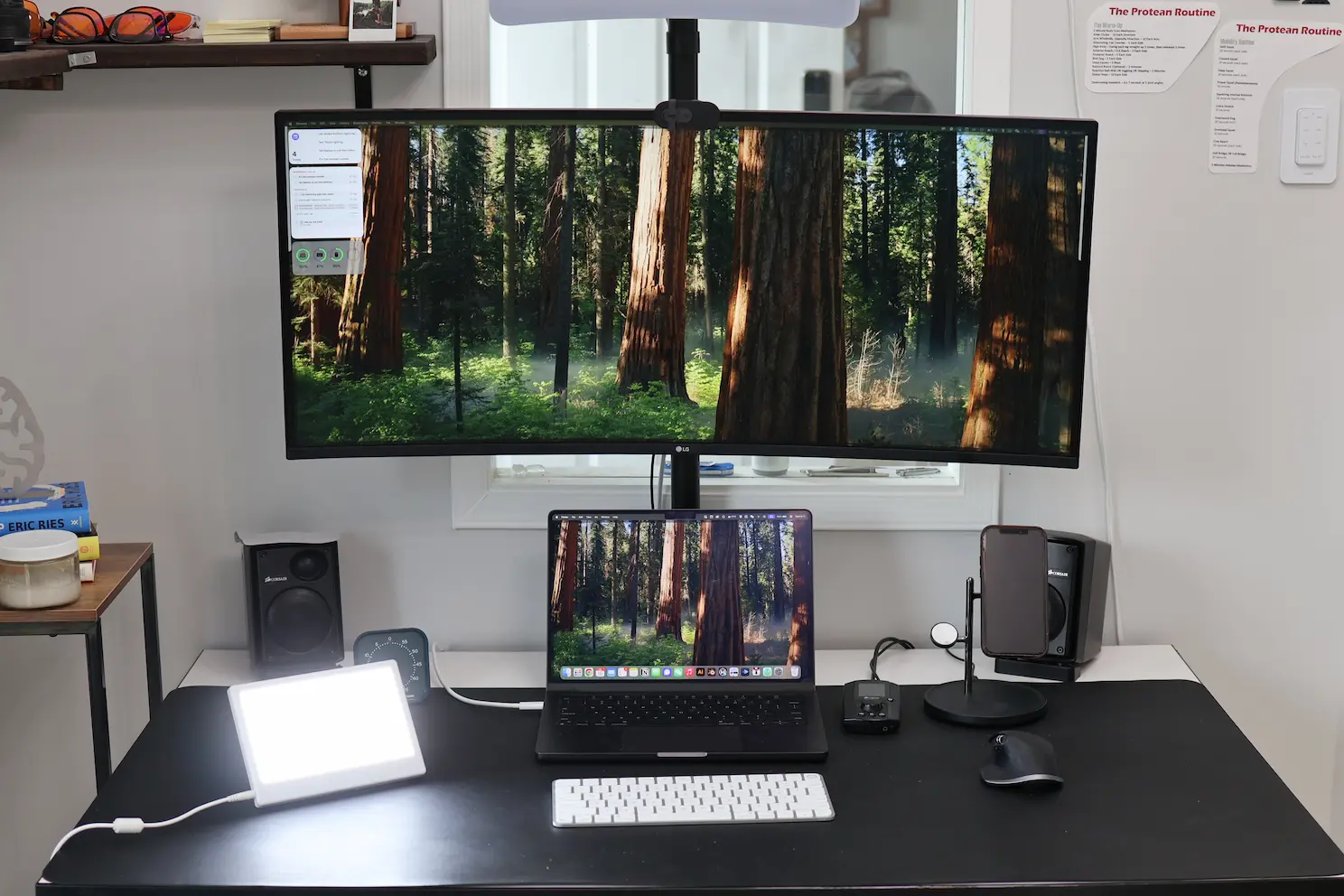
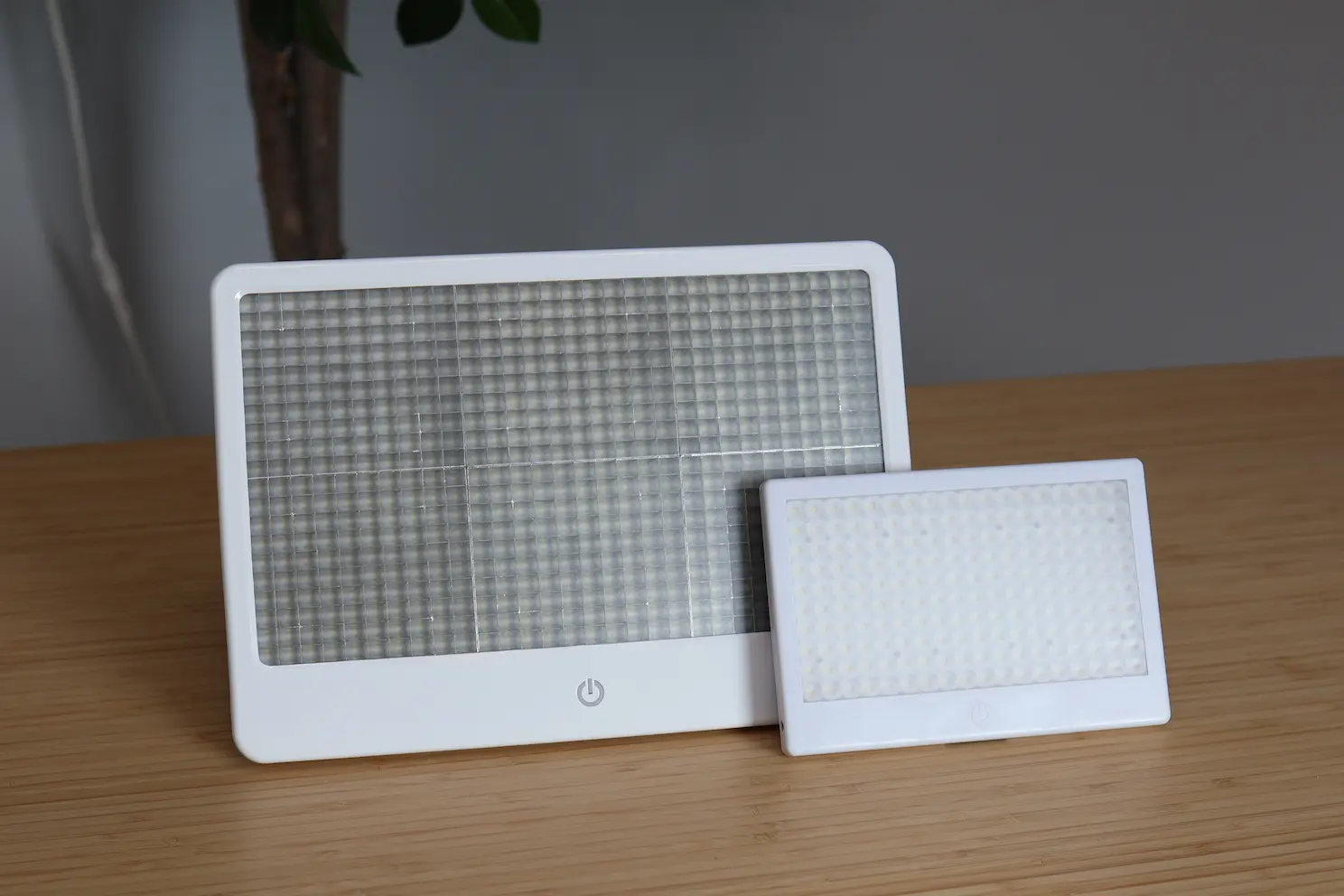

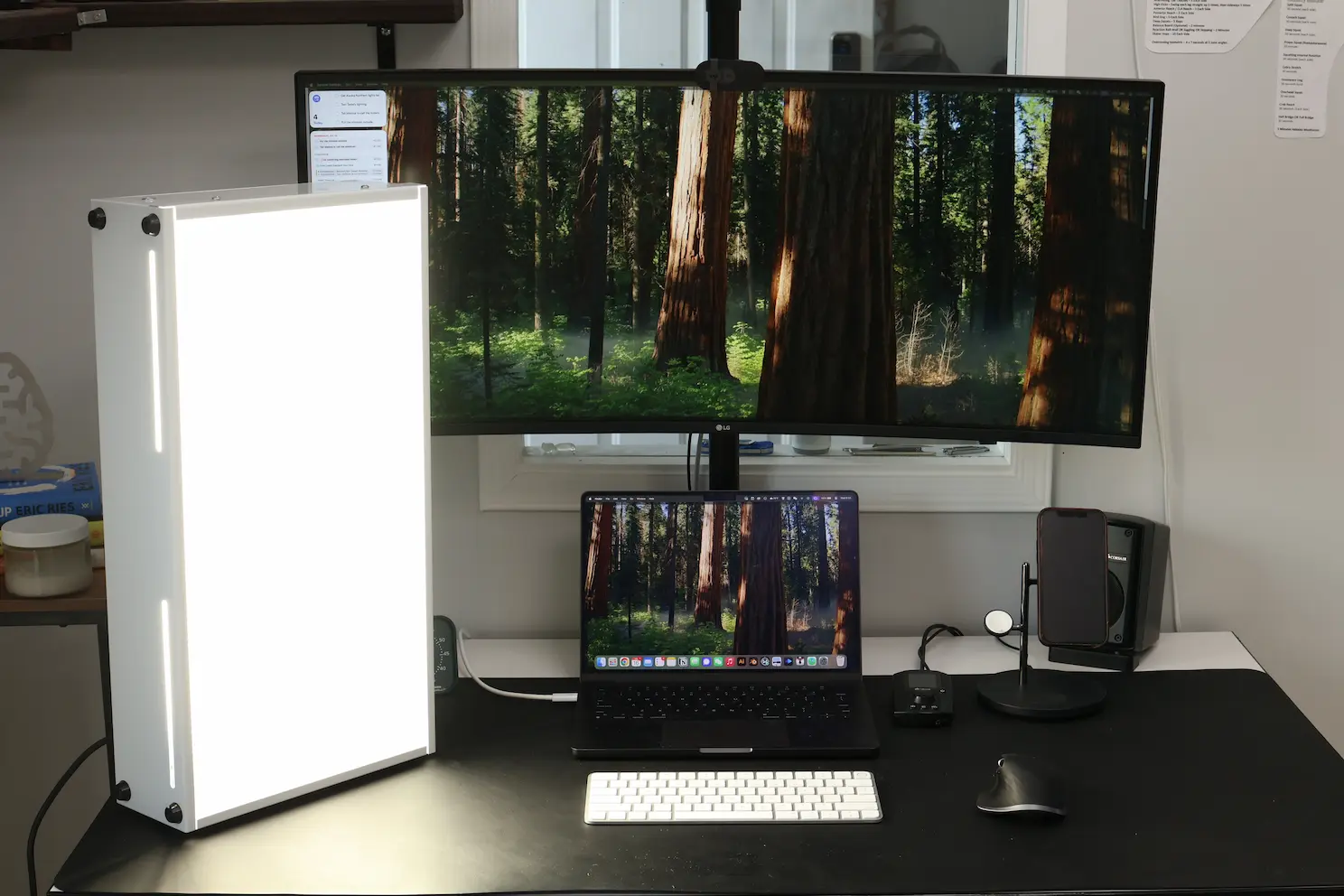









Hi Derek, Thank you for your very thorough reviews. One question I have about the Mini is using it at its lower light settings. I called the company and they said on the second setting you get 10k lux at 18 inches and at the lowest setting 10k lux at 12 inches. Just wondering if it would be more comfortable to use at these settings with the light closer. Thanks again.
Hey John! Yes it would be more comfortable, its a little difficult to quantify because our metric of lux/in2 is lacking technical nuance. But overall the less total light coming out of a device of any kind, the lower it’s apparent glare will be no matter what the distance is.
So if you lower the brightness output but move it closer it will be more comfortable.